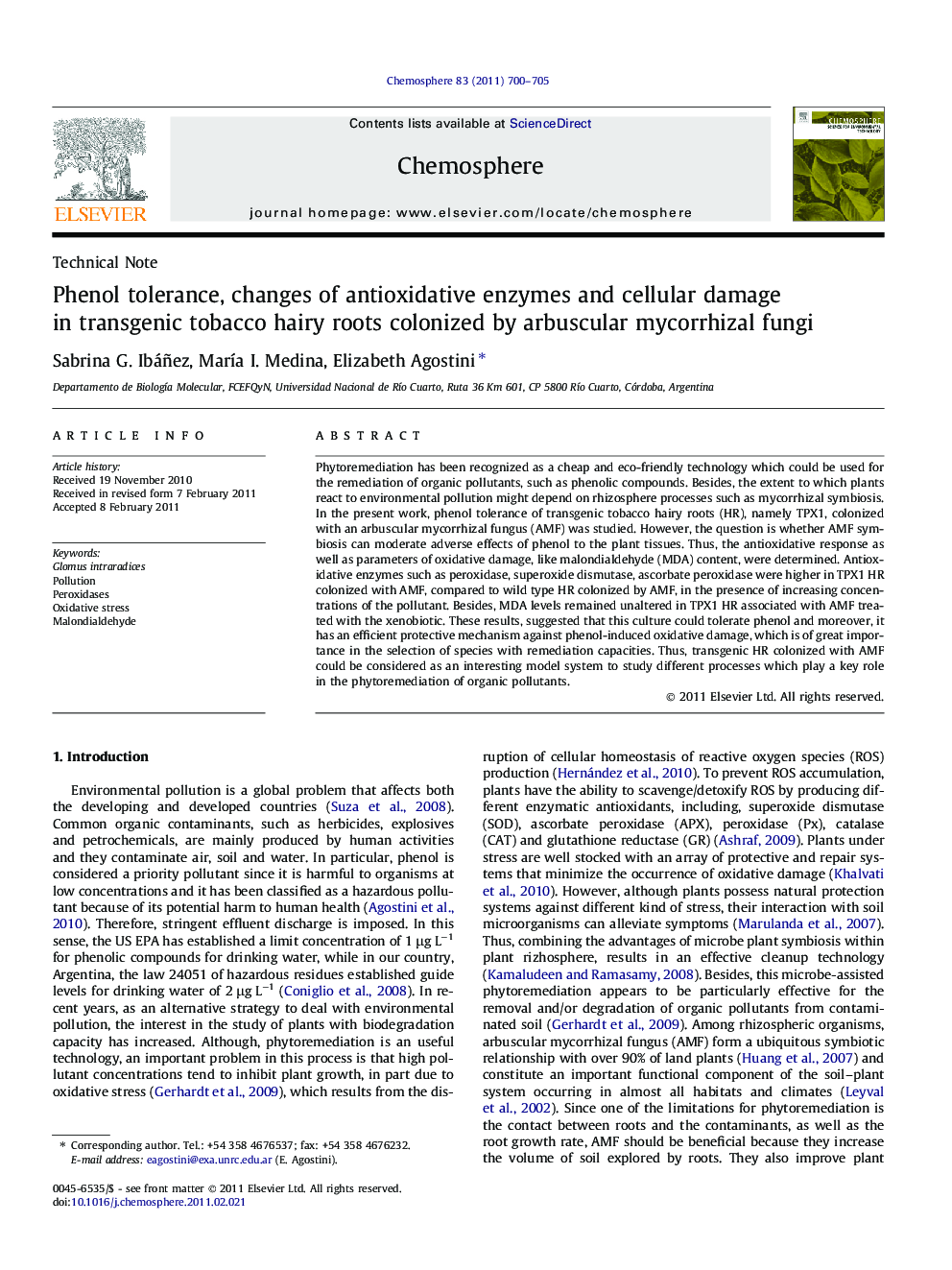| Article ID | Journal | Published Year | Pages | File Type |
|---|---|---|---|---|
| 4410847 | Chemosphere | 2011 | 6 Pages |
Phytoremediation has been recognized as a cheap and eco-friendly technology which could be used for the remediation of organic pollutants, such as phenolic compounds. Besides, the extent to which plants react to environmental pollution might depend on rhizosphere processes such as mycorrhizal symbiosis. In the present work, phenol tolerance of transgenic tobacco hairy roots (HR), namely TPX1, colonized with an arbuscular mycorrhizal fungus (AMF) was studied. However, the question is whether AMF symbiosis can moderate adverse effects of phenol to the plant tissues. Thus, the antioxidative response as well as parameters of oxidative damage, like malondialdehyde (MDA) content, were determined. Antioxidative enzymes such as peroxidase, superoxide dismutase, ascorbate peroxidase were higher in TPX1 HR colonized with AMF, compared to wild type HR colonized by AMF, in the presence of increasing concentrations of the pollutant. Besides, MDA levels remained unaltered in TPX1 HR associated with AMF treated with the xenobiotic. These results, suggested that this culture could tolerate phenol and moreover, it has an efficient protective mechanism against phenol-induced oxidative damage, which is of great importance in the selection of species with remediation capacities. Thus, transgenic HR colonized with AMF could be considered as an interesting model system to study different processes which play a key role in the phytoremediation of organic pollutants.
► G. intraradices could establish symbiosis with tobacco HR under phenol treatment. ► Colonized tobacco HR (wild type and transgenics) could tolerate phenol. ► Transgenic HR, generally showed higher activity of antioxidative enzymes. ► Colonized transgenic HR showed the lowest oxidative damage after phenol treatment. ► The AMF symbiosis would moderate adverse effects of phenol on tobacco root tissues.
